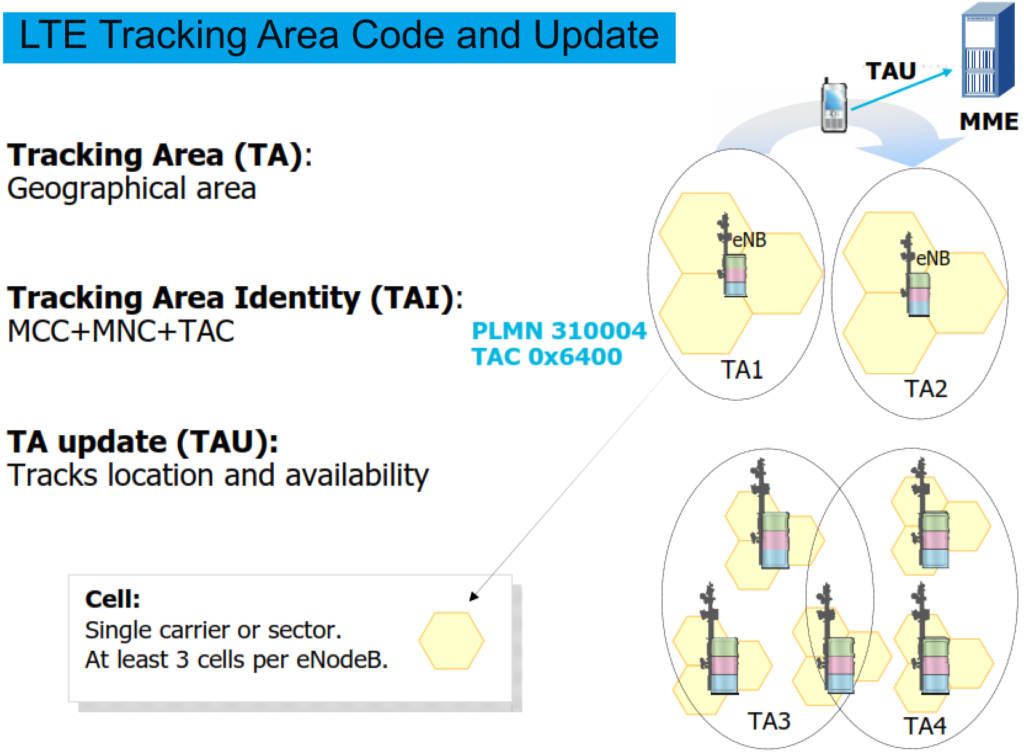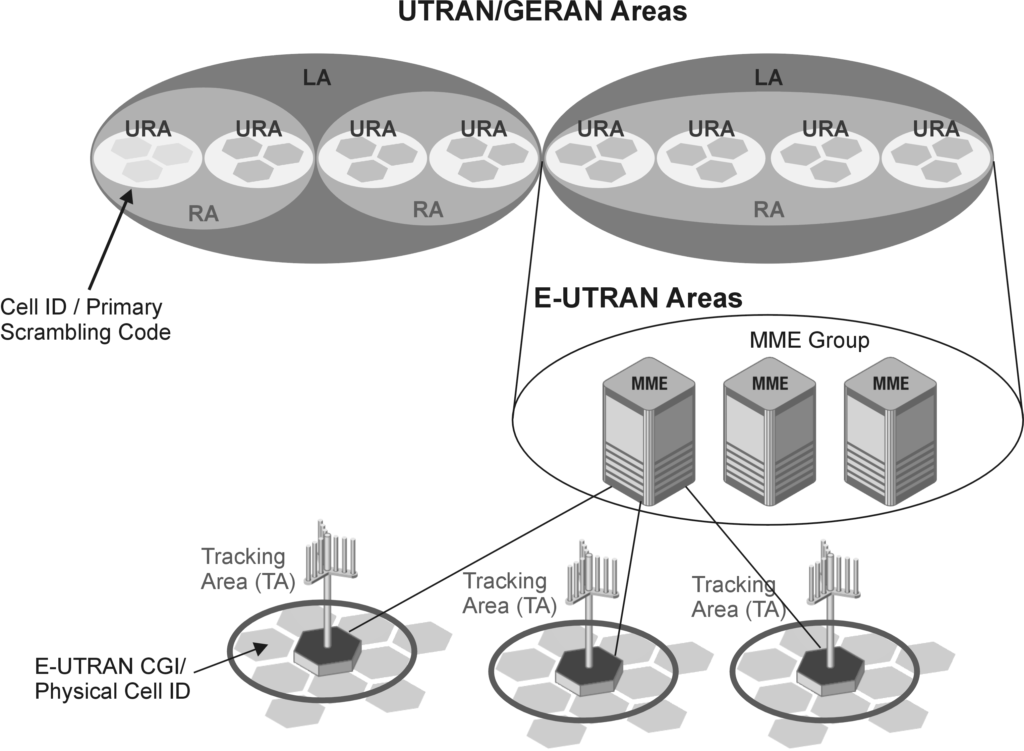A tracking area (TA) in LTE networks is a designated geographical zone where a mobile subscriber can move around without needing to inform the Mobility Management Entity (MME) of their location. This reduces the need for frequent location updates, known as Tracking Area Updates (TAUs). Each TA comprises one or more cells, and typically includes multiple eNodeBs. While it is possible for cells within the same eNodeB to belong to different TAs, it is generally recommended that all cells of an eNodeB be in the same TA for efficiency.

Tracking Area Update (TAU).
When a User Equipment (UE) crosses from one TA to another, it triggers a TAU to inform the MME of its new location. Additionally, UEs periodically perform TAUs to notify the MME of their availability and position, even if they haven’t moved to a new TA.
Tracking Area Code (TAC) and Tracking Area Identity (TAI).
Each TA is uniquely identified by a Tracking Area Code (TAC), a number ranging from 1 to 65,535. Network operators assign TAC values and provision them into the MME. The TAC values are mapped to MME groups and Serving Gateway (SGW) pools, influencing the selection algorithms for MMEs and SGWs. The TAI combines the TAC with the Public Land Mobile Network (PLMN) identifier, which includes the Mobile Country Code (MCC) and Mobile Network Code (MNC). This combination helps determine if a UE is treated as a local (Homer) or a roaming (Roamer) subscriber.
Importance of TA Design and Placement.
Strategic design and placement of TAs are crucial for minimizing the frequency of TAUs. Reducing TAUs conserves UE battery life, optimizes air interface resources, and reduces signaling to the MME. For example, creating overlapping areas where users frequently move back and forth can lower the number of TAUs and avoid scenarios where a UE repeatedly switches between TAs (known as ping-ponging).
Role of MME with TAs
The MME plays a vital role in managing TAs. It uses TAs for paging UEs and determining when a new SGW is required during handover procedures. The MME also provides UEs with a list of registered TAIs during the Attach and TAU procedures. This TAI list includes the Last Registered TAI, allowing the UE to move freely within these TAs without triggering location-based TAUs. The list can also include neighbors to the Last Registered TAI and the previous TAIs.

Benefits of Efficient TA Management.
Efficient TA management brings several benefits:
- Battery Life: Reducing the number of TAUs saves UE battery life.
- Resource Optimization: It conserves eNodeB and air interface resources.
- Signaling Reduction: Less signaling to the MME is needed.
- Effective Paging: Proper TA design improves the effectiveness of paging UEs.
- Avoiding Ping-Pong Effects: Proper placement strategies can avoid ping-pong effects at TA borders, ensuring smoother transitions and better network performance.
By carefully designing and managing TAs, LTE networks can achieve improved efficiency and user experience.
Structure of Tracking Areas (TAs).
A Tracking Area (TA) consists of one or several E-UTRAN cells. The specific design of TAs depends on radio network planning and can vary widely. Typically, a TA is defined to cover all cells of a single eNodeB (eNB). However, in some cases, particularly with network sharing, a single eNB or even a single cell may belong to multiple TAs. This allows for greater flexibility in network design and management.
Radio Network Planning.
The detailed configuration of TAs is determined during radio network planning using proprietary definitions and rules. The primary goal is to optimize the network for efficiency, coverage, and user experience. For example, in a typical network plan, a TA might be designed to cover all cells of one eNB, ensuring that users can move freely within that area without needing to update their location frequently.
Example Configuration.
In practice, the design and implementation of TAs are tailored to the specific needs and layout of the network. Figure below illustrates a scheme based on the assumption that a single TA typically covers all cells of one eNB. This configuration simplifies network management and helps maintain efficient tracking of user equipment (UE) within the network.
